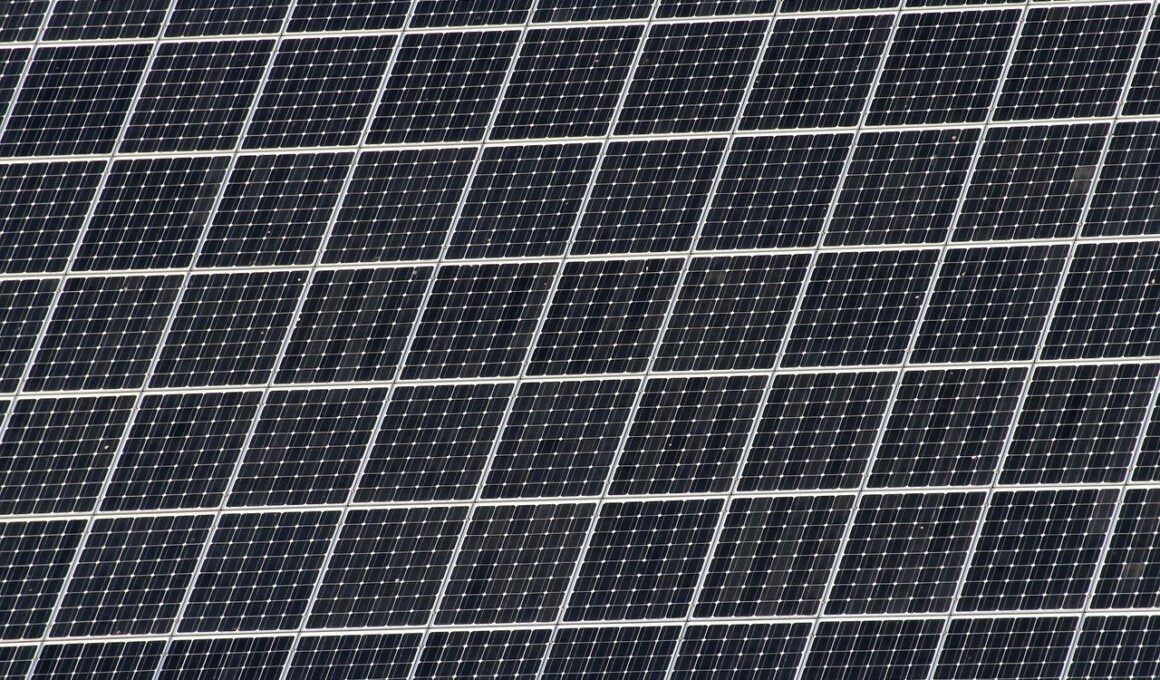Electricity Demand Forecasting and Its Economic Significance
Electricity demand forecasting is a crucial aspect of energy management, affecting various economic indicators. Accurate forecasts enable utility companies to adjust their production levels, maintain grid stability, and optimize resource allocation. The reliability of such forecasts can directly impact economic growth, reflecting wider market trends. As economies evolve, their electricity consumption patterns also shift, requiring ongoing adjustments in forecasting methods. Utilizing advanced technologies such as artificial intelligence and machine learning significantly enhances forecasting accuracy. These tools analyze vast datasets, identifying consumption trends and patterns that inform predictions. Additionally, forecasting supports improved demand response strategies, encouraging consumers to alter usage during peak times. Understanding demand dynamics can lead to cost savings for both providers and consumers. Enhanced accuracy in forecasting ultimately creates a more resilient electricity infrastructure, facilitating investments and sustainability efforts. Moreover, it strengthens the financial viability of energy providers by preventing potential outages and ensuring adequate supply. The interlinking of predicted demand and economic health underlines the need for robust forecasting models, which ultimately contribute to efficient market operations.
The Role of Electricity in Economic Growth
Electricity serves as a cornerstone for modern economies, powering industries, commerce, and daily lives across the globe. Its role extends beyond mere consumption; it acts as a metric for economic development. The analysis of electricity consumption patterns often reveals underlying economic activities and trends. As businesses expand and populations grow, electricity demand rises proportionately, often serving as a reliable indicator of economic health. In developing economies, increased electricity access typically correlates with improved living standards and industrial growth. Notably, strategic investments in energy infrastructure enhance productivity across various sectors. When electricity consumption stabilizes or grows, it signals a growing economy, attractive for both domestic and foreign investments. Understanding the demand for electricity thus becomes essential for policymakers and businesses alike.Moreover, fluctuations in demand can highlight economic downturns, influencing fiscal strategies and investments. For example, declining electricity use may indicate recessionary trends, pushing governments to intervene economically. Thus, anticipating shifts in electricity demand can provide valuable insights for strategic planning. Investments in energy optimization today will prove vital for future economic resilience.
Forecasting electricity demand relies on various methodologies, each with advantages and limitations. Traditional statistical techniques, such as time series analysis and regression models, have been staples in the industry for decades. These models attempt to understand historical consumption data, creating a baseline for future predictions. However, they sometimes fall short in capturing complex, nonlinear relationships inherent in consumption patterns. With the dawn of the digital age, machine learning and artificial intelligence have transformed forecasting. Algorithms can process vast amounts of data and identify intricate patterns that traditional methods cannot. Factors such as weather, economic fluctuations, and demographic shifts are more accurately integrated into predictive models. Accurate forecasting allows utility companies to manage supply chains more effectively, maintain grid performance, and optimize production. It ultimately enables them to meet consumer needs without unnecessary outages or resource wastage. The role of data analytics cannot be overstated; they provide actionable insights essential for strategic decisions. As technology evolves, integrating real-time data into forecasting processes will likely become the new norm, ensuring more responsive energy solutions.
Impact of Renewable Energy on Forecasting
The rise of renewable energy sources significantly influences electricity demand forecasting. As countries worldwide transition toward greener energy, the patterns of electricity consumption change, often presenting new challenges for accurate predictions. Renewable energy sources, such as solar and wind, are inherently variable, creating uncertainties that traditional forecasting models struggle to accommodate. This variability necessitates the development of new frameworks and tools to ensure reliable electricity supply while optimizing resource use. Integrating renewables into forecasting requires considering not only demand but also generation patterns. Advanced forecasting models now include environmental factors influencing renewable energy output, such as weather conditions. This comprehensive approach improves overall predictive accuracy in energy markets. Furthermore, with electricity markets evolving, real-time data becomes crucial. Smart grids and energy management systems can facilitate real-time adjustments based on immediate consumer demand and energy production. Such innovations empower consumers and utility providers alike to engage proactively in energy management. Understanding how these developments impact forecasting and demand can lead to more sustainable energy practices, driving economic growth while minimizing environmental impacts.
Moreover, robust forecasting plays a significant role in energy policy and regulation, guiding investment decisions and governmental initiatives. Policymakers rely on demand forecasts to set strategic energy objectives, informing infrastructure investments necessary to meet future needs. Accurate forecasts help establish a balanced and sustainable framework for developing both generation capabilities and consumption strategies. Consequently, energy policies founded on sound predictions foster community engagement. Informed stakeholders can advocate for appropriate energy management solutions, seeking balance between economic growth and environmental sustainability. As electricity demand becomes increasingly intertwined with economic policies, long-term planning becomes critical. Governments can leverage demand forecasts to drive energy efficiency initiatives, reducing overall consumption and greenhouse gas emissions. By anticipating fluctuations in energy needs, they can allocate resources more effectively, avoiding unnecessary costs associated with overproduction. Investments in demand-side management programs help refine consumption patterns, aligning them closely with future supply forecasts. In conclusion, effective forecasting is fundamental for ensuring that energy markets operate efficiently, balancing consumer needs with sustainable growth in an ever-evolving economic landscape.
The Future of Electricity Demand Forecasting
Looking toward the future, electricity demand forecasting will continue to evolve rapidly, influenced by technological advancements and changing consumption patterns. The integration of smart technologies and the Internet of Things (IoT) into everyday life presents both opportunities and challenges for accurate forecasting. Smart devices enable detailed monitoring of energy use, providing granular data that enhances predictions. However, as consumer behavior grows more complex with technological adoption, understanding these changes will be essential. Furthermore, as more stakeholders enter the market, competition may drive innovations in forecasting processes. Collaborative efforts between academia and industry can ensure continuous improvement of forecasting methodologies. Regulatory bodies may also play a role in this evolution, establishing standards for how forecasts are generated and utilized in decision-making. This shift towards data-driven insights in energy management will likely catalyze sustainable practices, aligning economic objectives with environmental responsibilities. In response to climate change demands, forecasting will also prioritize resource conservation, shifting towards more responsible energy consumption patterns. Ultimately, flexible and sophisticated forecasting tools will be crucial for navigating the future challenges of energy demand.
In summary, electricity demand forecasting is not merely a technical necessity but a vital component of economic planning and sustainability. An accurate understanding of consumption trends greatly informs both business and regulatory strategies. As we have explored, the intersection of accurate forecasting and economic significance cannot be overstated. By leveraging advanced tools and data-driven insights, companies can optimize performance, reduce costs, and redirect resources wisely. The commitment to integrating new technology into forecasting efforts will yield substantial benefits, allowing energy providers to remain responsive and resilient. Furthermore, understanding electricity consumption patterns will empower governments and policymakers to craft effective energy policies that address both current and future challenges. As the landscape continues to evolve, ongoing investment in forecasting research will ensure adaptability in our approaches towards energy efficiency. Innovative practices and collaborative efforts across diverse sectors will ultimately promote a sustainable future. This collective understanding and commitment reaffirms the essential role of accurate electricity demand forecasting in driving economic growth and ensuring environmental responsibility, fostering a resilient energy ecosystem.


